Website testimonials: 3 places where you should put them
It's hard to know exactly where to put a product testimonial on your website. These are the 3 places you absolutely cannot miss...
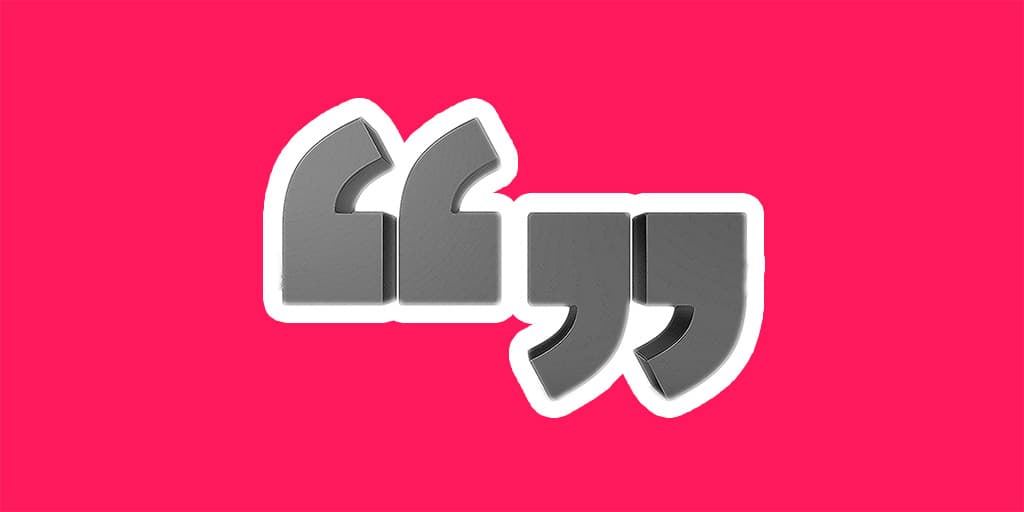
Where to place your website testimonials? The 3 key locations to place testimonials for increased conversion are the home page, near the pricing or signup information, and in customer case studies.
To maximise the impact of your testimonials and increase conversion, it is not enough to simply publish them on their own “testimonials” page; you need to think about where to put them strategically.
There are specific pages and locations throughout your website where your customers are more likely to be engaged in a buying decision—that is where testimonials become key.
Struggling to collect testimonials? You need a free testimonial collection software.
Why Is Testimonial Placement Important?
People are distrustful of the tsunami of ads and promotions they experience online, and it is fair to say that we’re experiencing a crisis of trust in the marketplace.
Testimonials help significantly in building trust, but testimonials must be genuine.
In a way, they're a silver bullet to drive more sign ups, more people through your marketing funnel, and more sales—but only when they're placed mindfully within a buyer's journey.
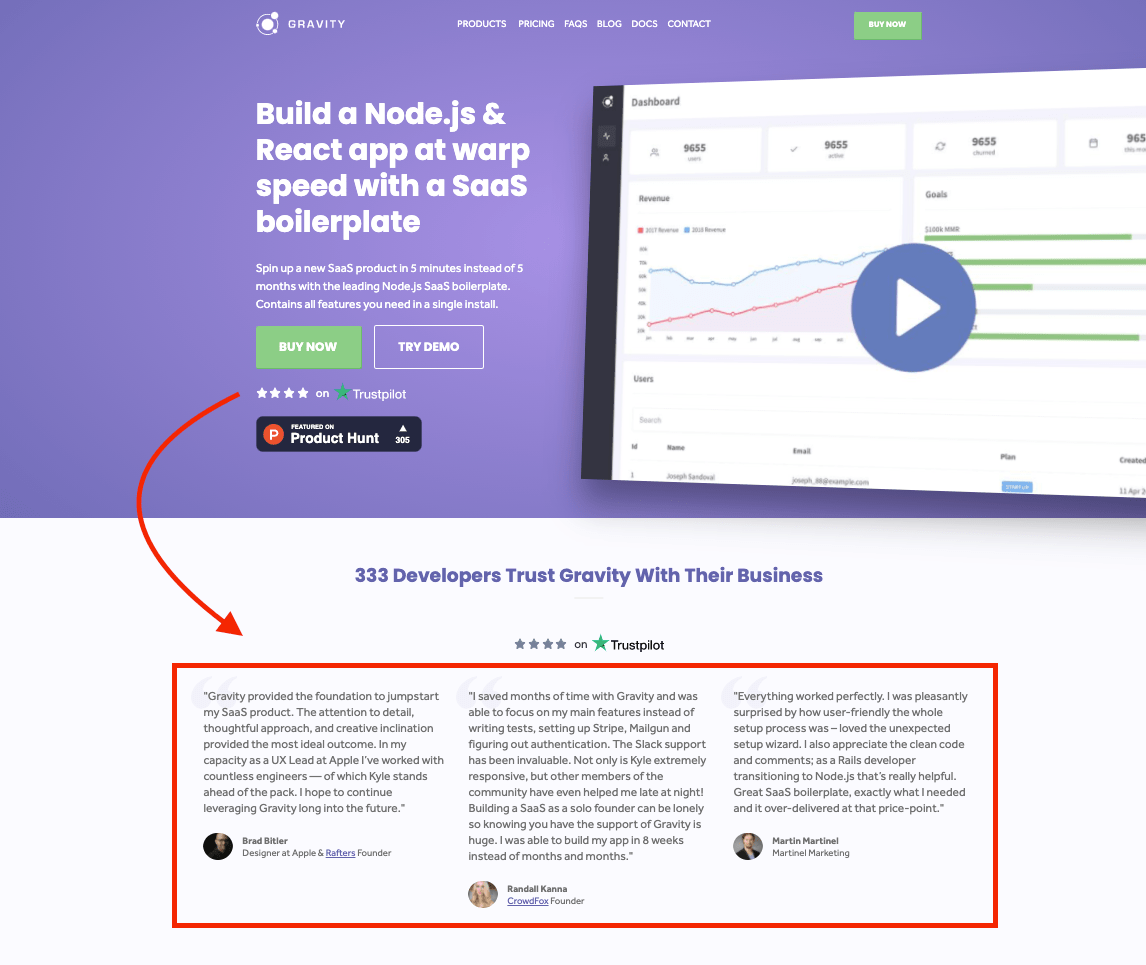
In terms of gaining trust, Search Engine Land states that 88% of buyers trust online reviews just as much as they would a recommendation made by a personal friend.
This means that trust-building testimonials must be strategically integrated into specific locations and pages throughout your website where they can be effective in terms of engaging your visitors and persuading them to make a purchasing decision.
Where Testimonials Fit in the Buyer's Journey
The buyer’s journey is the decision process buyers go through while they’re deciding whether to buy your product or not.
It's a concept that's been around for a long time but that has recently been mastered and taught by HubSpot, a software suite focusing on customer experience.
While traditional marketers think of the buyer's journey as a downward spiral, similar to a funnel, a new way of thinking about it is like a flywheel of stages that fuel each other.
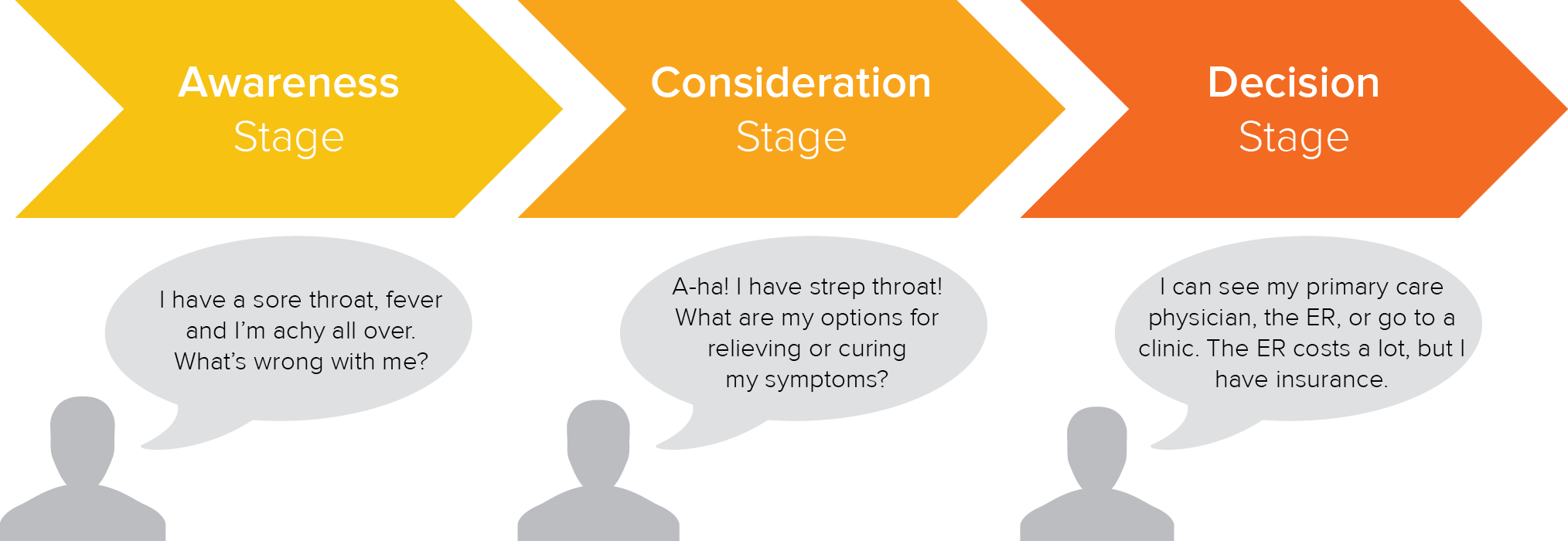
There are 3 stages to the flywheel:
- Awareness
- Consideration
- Decision
While marketers think of this as a funnel, i.e. a one-dimensional approach to making a specific sale (and that's it), the flywheel considers the continuous process of selling even to existing customers—not just prospects.
That's where most of your business will come from.
Whether existing or new, a customer needs to be aware of your offering before they can consider purchasing it. After which they tend to make a final decision.
Whether existing or new, a customer needs to be aware of your offering before they can consider purchasing it.
Once the prospect has done their research and established a clear pathway to make the purchase, testimonials are the most important marketing tool to leverage.
Your testimonials are a positive reinforcement that, when applied at the decision stage, represent the primary factor for converting prospects into customers.
It's Not Easy To Make a Purchasing Decision
This is especially true if a customer has never purchased your product before; people prefer not to be the first (unless it’s a race) because of the inherent risk of the unknown.
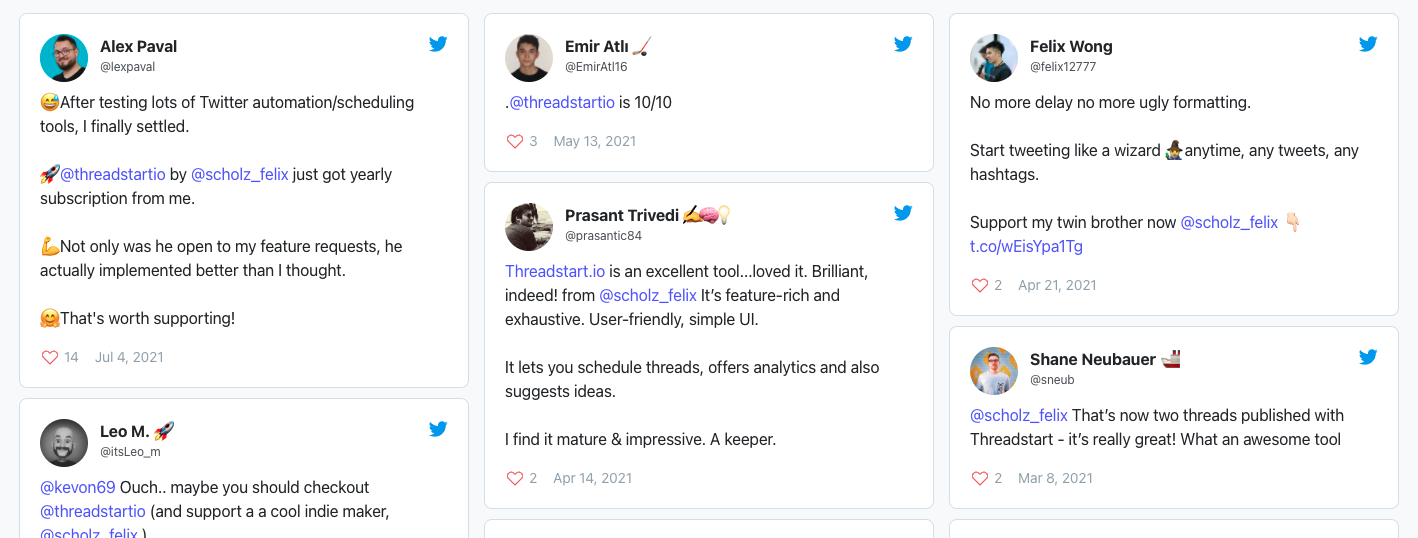
And it is only natural to want to know what others think of a certain product before we’re willing to open our wallets.
By not placing testimonials at key locations on your site, you’re introducing an unnecessary mental barrier for the prospect by giving them no real frame of reference or knowledge of anyone else’s experience using your product.
For this to be effective, you want to leverage the fear of missing out phenomenon by highlighting sentences that cause prospects to feel like they are missing out on something big.
The anxiety caused from the thought that prospects may be missing out if they don’t buy your product can also make properly placed testimonials a very effective tool.
Always default to genuine praise of your product; don't try to fake your testimonials or force customers to give positive opinions.
You don't want to overdo this effect though; playing with people's fears without offering real substance in the product or service offered is not something I recommend.
Always default to genuine praise of your product as a rule of thumb; you may ask for feedback from customers but never force them to say things they wouldn't or fake testimonials.
Testimonials Speed Up The Decision Process
Positive testimonials that are strategically displayed in the appropriate locations expedite a prospect’s decision process as they provide them with a frame of reference.
If they understand your product’s benefits, including the price, a testimonial that is presented at that moment can be the final bit of information they need to persuade them to buy.
How To Structure Your Website To Match
Your website should present testimonials in various locations: the home page, the pricing page, the signup page, and case studies (success stories of customers using your product).
Your site should promote organic testimonial placement, not forced tactics like creating a separate page with nothing but testimonials.
The structure of your site should promote organic testimonial placement, not forced tactics like creating a separate page with nothing but testimonials which may or may not mean anything to someone browsing your website.
A better strategy is to place testimonials that talk about a specific capability of your product or service right after you presented it to the visitor.
This gives the prospect a sense of real value that the capability provides, and gives them a real-world example to work off of when they choose to purchase your product.
» Read more: See other examples of great testimonials
3 Places Testimonials Should Always Appear In
You need to know what specific pages your customers are spending the most time on when determining where to place your testimonials.
A prudent approach to gaining this information is website visitor tracking resources that can provide a conclusive understanding of visitor behavior.
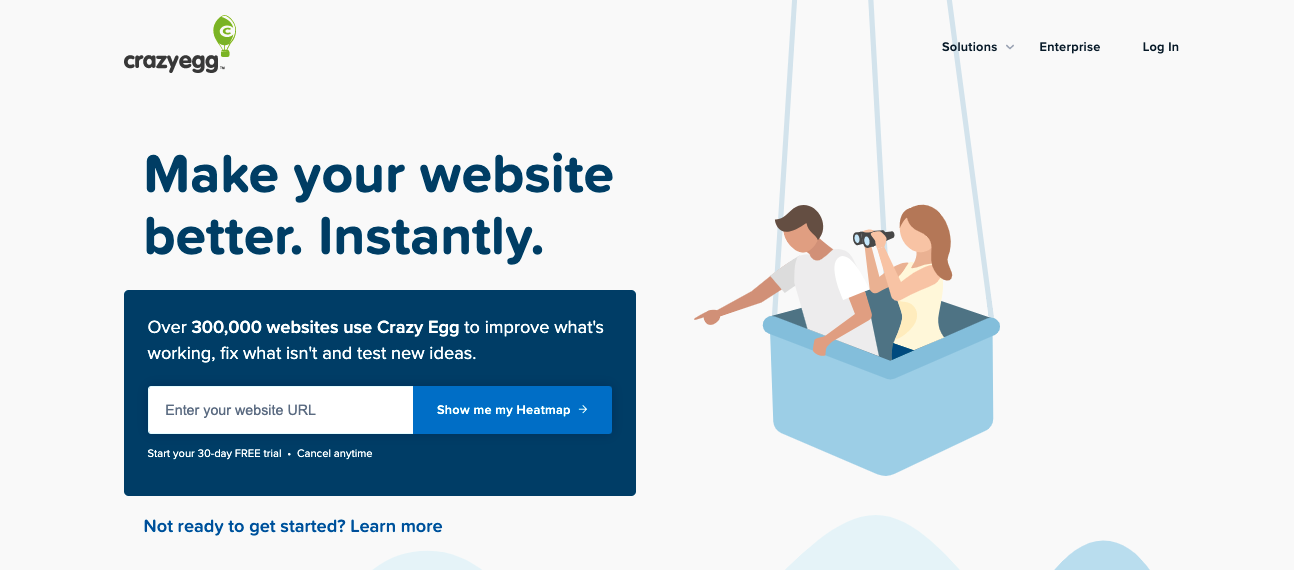
Testimonials are too important to be left to guesswork so to truly understand the browsing habits of your visitors you need to collect the data to inform placement.
Google Analytics will yield basic audience and behavioral metrics, while Crazy Egg provides more resourceful "snapshots" of user behavior, including heatmaps of website clicks, scroll times, and additional information meant to offer the full picture.
Leedfeeder is another type of visitor identity resource that can show you the companies visiting your website, how they found you and what they’re interested in.
Prospects tend to spend time where they find the relevant information for their specific needs (feature pages, blog posts, documentation, etc).
This type of software is incredibly useful for developing an understanding of the natural pattern of how customers experience the journey on your website.
Generally, you will see that most prospects tend to spend time where they find the relevant information for their specific needs.
Here are 3 placements that usually pop up:
Website Placement #1: Home/Landing Page Testimonials
Few methods are as effective at getting testimonial content in front of potential customers than placing them on your home page (or landing page for direct sales funnels).
Your home page is where all prospects will eventually end up.
Placing a testimonial directly in front of a customer the moment they visit your home page is a great method of providing immediate and verifiable evidence of your product’s success with previous buyers.
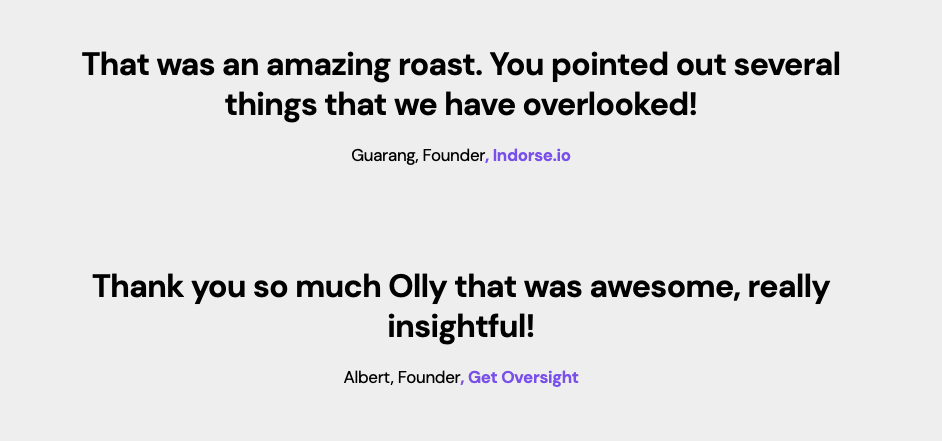
Also, seeing evidence of a previous buyer’s positive experience with your product often prompts new visitors to investigate your product further, making this strategy even more compelling.
Seeing favorable comments from previous buyers right off the bat can put your company in a very good light with new visitors and give an overall sense of trust.
Website Placement #2: Pricing/Signup Testimonials
It is frustrating to learn from your analytics that visitors often flee your site once they come upon your pricing or signup page.
This is the page where a visitor can make the transition to trailing or paying customer, and it is the cornerstone of your buyer's journey.

Seeing a persuasive testimonial at this stage of the buyer’s journey can be precisely the proof that a prospect needs to decide to move forward your product.
A testimonial presented on the signup page presents the prospect with proof of your product’s value in the moment when the journey is most painful for them.
» Nobody likes parting with their hard-earned cash
For customers to feel more at ease during this key step, use testimonials that talk about the quality of the support channels available to buyers, and the prompt communication.
You can also opt for testimonials talking about the long-term benefits of using your service, showing that it's worth making the commitment today for what's to come.
Website Placement #3: Testimonials on Case Studies
A case study is a well-presented customer story where you ask specific questions and showcase the answers as testimonials.
Case studies present testimonials as reinforcement for the solutions that your product offers and that solved a customer's problem effectively.
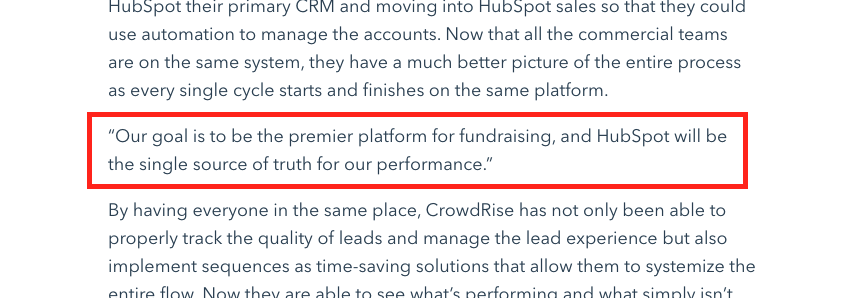
This is a testimonial that provides a prospective customer with a complete story that has details, specific outcomes, and oftentimes a headshot of the previous customer.
These testimonials can be especially effective for B2B companies who are attempting to persuade key decision-makers to buy into the product or service.
97% of B2B customers cited testimonials and peer recommendations as the most reliable type of content in determining whether to buy from a company.
Use Website Testimonials To Your Advantage
All the way through to purchase, people make buying decisions emotionally, and only after the fact attempt to justify these decisions rationally, through logic.
All the way through to purchase, people make buying decisions emotionally. They only attempt to use logic after the fact.
Because of this strong emotional trait associated with buying things, testimonials play a key role in making the decision to purchase easier for the prospect as they bring context to often abstract concepts such as "peace of mind" or a "more streamlined workflow".
Placing testimonials in the right locations on your website will result in a huge sales boost for your business, and it's something that I've spent a lot of time perfecting.
Originally published Sep 24 2021
Frequently Asked Questions
Where should I put testimonials on my website?
Your website’s home or landing page, the pricing or signup page, and present them as case studies on the pages that are most frequently visited.
How do I use testimonials on my website?
By collecting and posting credible feedback from your best customers that includes specifics about how a company benefited from your product or service.
How can I collect ,ore testimonials?
Senja is a free tool for collecting video and text testimonials.
Where can I find some testimonial templates?
Here are some awesome testimonial templates for you to share testimonials online.
Should I include testimonials on my website?
Yes. Credible testimonials are one of the most effective types of content for establishing trust with new prospects. They're a "silver bullet" for increasing your sales efforts.